Viacheslav Volkov is not just a tattoo artist; he is a visual storyteller who transforms skin into a canvas, capturing moments with breathtaking realism. With a collection of prestigious awards under his belt and a published book titled “Art on Skin: Symbolism and Combinations“, his influence in the tattoo world is undeniable. Beyond these remarkable achievements, his work continues to inspire and challenge the boundaries of what tattoo art can be. Within this exclusive and articulated interview we explored his journey, his philosophy, and the story behind his career.
How would you introduce yourself to readers who are not familiar with you?
My name is Viacheslav Volkov, and I am a tattoo artist specializing in realism. For me, tattooing is not just an art form but a powerful tool for self-expression—a way to tell a story, capture a significant moment, or even change the way a person perceives their own body. I believe that every piece should not only look beautiful but also carry deep meaning and aesthetics. A tattoo is a living painting that moves, ages with a person, and becomes a part of their identity. It is important to me that my work looks harmonious not only in photos but also in real life. Throughout my career, I have gained international recognition, won awards at prestigious tattoo conventions, and collaborated with major studios. However, the greatest reward for me is the trust of my clients, who choose me to bring their ideas to life.
Where did your passion for tattoos come from?
My passion for art began in childhood. I would draw anywhere I could—on paper, in school notebooks, and even on walls. I always wanted to create something new, something beyond traditional formats. My mother and school teachers recognized my talent, so I started attending design courses and later enrolled in an art college, where I studied drawing, oil painting, composition, anatomy, and all the disciplines an artist should master. After receiving my diploma, I realized that graphic design was not what I truly wanted to do. At some point, I understood that simply drawing was not enough for me—I wanted my work to live beyond the canvas and have a connection with people. That’s when I started thinking about tattooing. It’s an art form that cannot be hung on a wall or stored away in a closet—it becomes part of a person, moves with them, and reflects their character, beliefs, important life moments, inspirations, and even personal tastes. From that moment on, I fully immersed myself in the world of tattoo art.
How and when did you start tattooing?
I did my first tattoo in 2013. It was a conscious step because, before that, I had spent a long time studying painting, anatomy, graphics, and color theory. At that time, there wasn’t much information available, and I had to gather this knowledge piece by piece. I wanted to combine artistic mastery with the individuality of each client. My first work was the Tree of Life, which I tattooed on my father. That moment showed me that tattooing is something much more significant—it’s a story, an emotion, an important milestone in a person’s life.
Where are you located?
Currently, I have been living and working in a major tattoo studio network in Turkey for two years, but my plans are focused on building an international career, including working in the United States. My clients come from all over the world, and I am always open to new challenges and collaborations.
How would you describe the tattoo scene in Turkey today?
The Turkish tattoo industry is developing but is still in its early stages. There are talented artists at a world-class level, but they are quite rare. In most cases, the industry suffers from a high number of low-quality works due to the lack of systematic, high-level training. Additionally, artistic materials are quite expensive, making creativity less accessible. When I worked in Russia, studying painting was considered an essential part of tattoo artistry, and great emphasis was placed on continuously improving skills. Copying someone else’s tattoos was seen as disgraceful and stripped an artist of respect. This mindset contributes to the growth of the industry rather than devaluing centuries-old art. I believe that using Pinterest as a source for copying other people’s tattoo designs should be taboo for all tattoo artists.
However, in Turkey, I often see widespread copying of existing tattoos, which is not beneficial for the industry as a whole. Here, deeper client education is needed to explain that Pinterest is not a catalog of tattoos to be replicated but rather a platform for finding inspiration. That being said, I truly appreciate the experience I have gained in Turkey. The people here are incredibly kind and open, with their own unique cultural perspectives on tattoos. Many tattoos hold deep meaning, symbolizing strength, family values, respect for traditions, and admiration for historical leaders. The warmth and kindness of the people here are truly remarkable.
How would you define your tattoo style?
I work in the realism genre, and for me, it’s a way to create images on the skin that look alive. At the moment, I am passionate about developing my own new style, which includes specific storylines with striking phrases and tattoos resembling jewelry made of different metals. In addition, I have many ideas for future projects that inspire me to keep evolving. I also have a stylistic approach where I work with narratives and add dynamics through brushstroke-like elements and dynamic lines that emphasize the body’s anatomy, creating a sense of movement within the composition.
What types of tattoo projects do you enjoy the most?
I love large-scale projects where I can fully develop an idea. These can include portraits, mythological themes, and complex compositions where every detail plays a role. I enjoy working with clients who have a clear vision, but I also value creative freedom when people trust my artistic perspective.
What is your main source of inspiration for your tattoos?
I draw inspiration from various sources, each of which shapes my style and approach in a unique way. Painting, photography, sculpture, architecture, and nature form the foundation of my visual perception. They help me better understand light, shadow, textures, and composition, which are crucial in realism. I also enjoy observing the work of other tattoo artists—it creates a sense of a vast artistic world where ideas are constantly exchanged.
Sometimes, I simply browse ArtStation or 35photo, immerse myself in the works of talented artists, and find something that resonates with me, sparking new tattoo designs. History, mythology, and legends are another important source of inspiration. I study ancient imagery, symbolism, and cultural traditions, incorporating them into my work while adapting them to a modern style. At times, a scene from a movie, the mood of a photograph, or the plot of a book can become the starting point for a unique tattoo. Travel plays a significant role in my creative process. The contrast of cultures, diversity of architectural styles, and everyday life of different peoples expand my worldview and help me discover new forms of artistic expression. Sometimes, simply changing my surroundings allows me to see familiar things from a different perspective.
Active recreation and extreme sports serve as a way to reset my mind. Riding a motorcycle, traveling with my wife, and those silent moments when we just enjoy the scenery and understand each other without words—all of these experiences help me disconnect from routine and refresh my perception. But most importantly, my greatest inspiration comes from the people I work with. Their stories, emotions, and ideas fuel my creativity and make each tattoo truly unique. I believe that a tattoo is not just an image—it’s a reflection of a person’s identity, and being part of that process is incredibly important to me.
What is the most challenging aspect of being a tattoo artist in 2025?
In 2025, the tattoo industry is evolving rapidly, bringing new challenges. One of the biggest difficulties is managing client expectations shaped by social media. Many people rely on retouched photos, edited videos, or digital sketches without fully understanding how a tattoo will look in reality after years on the skin. It often requires explaining that skin is not a canvas, and the final result depends on its structure, healing process, and even the person’s lifestyle. Another major challenge is standing out in a highly competitive field. With more and more artists entering the industry, it’s no longer enough to simply be technically skilled. Developing a unique style, refining the presentation of one’s work, and building a personal brand have become essential for success.
What is for you, the most rewarding aspect of being a tattoo artist?
The greatest reward in this profession is witnessing how your work transforms people. That moment when a client sees their finished tattoo for the first time, their eyes filled with excitement, joy, or even tears—that’s what makes it all worthwhile. Beyond that, I love this profession for the creative freedom it provides. Unlike many other jobs, tattooing allows for self-expression, the development of a unique artistic style, and the creation of original visual solutions. It’s not just a craft but a true art form where an artist can leave a lasting mark. This work also offers the opportunity to meet diverse people, hear their stories, travel, and work in some of the best studios around the world. Every client is a different world, and every tattoo becomes a part of their life. And, of course, the creative process itself is incredibly fulfilling. Watching as depth, textures, and intricate details emerge under the needle feels like pure magic. In those moments, everything else fades away, and all that matters is the joy of creating something meaningful and lasting.
What is your experience with tattoo conventions?
In recent years, I have participated in several major tattoo conventions:
- Izmir Tattoo Fest, Izmir, 2024
- Istanbul Tattoo Convention, Istanbul, 2024
- Marmaris Tattoo Festival, Marmaris, 2024
- Marmaris Tattoo Festival, Marmaris, 2023
- Moscow Tattoo Festival, Moscow, 2023
Do you remember the first tattoo convention you attended?
Yes, it was a long time ago in Russia, in the city of Sochi. That was my first experience immersing myself in the atmosphere of a tattoo convention—a space filled with energy, creativity, and competition. Before that, I had already been working in the industry, but the convention was a real revelation for me. I saw how tattooing extends beyond individual craftsmanship and becomes part of culture, community, and art. Artists from various styles showcased their vision, worked in front of live audiences, exchanged knowledge, and connected with each other. It was fascinating!
That was the moment I realized I could no longer imagine my life without this environment. Conventions became more than just a place to participate; they became opportunities to grow, exchange experiences, compete, and find inspiration. Since then, I have been moving forward, taking part in international festivals, and striving to showcase my art on the world’s most prestigious tattoo platforms.
What is your main reason for attending tattoo conventions?
For me, tattoo conventions are an opportunity for growth and development. They provide access to an environment where the best artists, unique works, and the latest technologies come together. It’s a place where you can not only showcase your skills but also test yourself under real conditions, receive an objective assessment of your level, and compare your work with the strongest in the industry. Participating in conventions also helps expand professional horizons—entering the international market, connecting with new clients, and establishing relationships with studios and brands. It’s a crucial step for professional growth and industry recognition.
Another key reason is inspiration and the exchange of experience. Seeing how other artists work, keeping up with new techniques, and observing trends—all of this helps avoid stagnation. Conventions provide an energy boost and motivate constant improvement. And, of course, the spirit of healthy competition. I participate in competitions not just for the awards but for the challenge itself—to push beyond my comfort zone, create work that can be recognized as the best, and prove to myself that I’m moving in the right direction.
Which tattoo convention has been your favorite so far? And why?
Among all the tattoo conventions I have attended, Izmir Tattoo Fest 2024 and Istanbul Tattoo Convention 2024 were the most memorable. The Istanbul Tattoo Convention impressed me with its scale and level of organization. It was a truly international event, bringing together not only tattoo artists but also major brands, studios, and equipment suppliers. Here, I had the opportunity to showcase my work, network with colleagues, discuss new trends, and exchange experiences with artists from around the world. The jury included highly renowned artists, which made it even more motivating to impress them.
Izmir Tattoo Fest stood out for its atmosphere—it had an incredible level of organization, high-quality artists, and strong competition. Talented tattoo artists from different corners of the world gathered there, providing a great opportunity to see where the industry stands and which techniques and styles are evolving. Moreover, at this festival, I won three awards, which was an important confirmation of my professional growth. Both of these conventions became significant milestones in my career.
What advice would you give to someone considering a career as a tattoo artist?
If you’re thinking about becoming a tattoo artist, it’s important to understand that this is not just a profession—it’s a way of life. There are no quick results, easy money, or guaranteed success. This is a journey that requires patience, discipline, and continuous growth. The first step is to develop your artistic skills. Without a solid understanding of anatomy, light, shadow, composition, and textures, it’s impossible to create high-quality tattoos. Learn to draw, study painting, photography, and sculpture—this will help you develop your own style rather than simply copying others.
The next crucial step is learning from professionals. Of course, you can try to master tattooing on your own, but a good mentor or quality courses will help you avoid many mistakes and save years of trial and error.
It’s also important to recognize that this job demands both physical and mental endurance. You’ll spend long hours in the chair, work with different types of clients, face criticism, and experience exhaustion—yet you must maintain focus and high-quality execution at all times.
Your attitude toward clients is just as important. People trust you with their bodies—and sometimes, their most meaningful life stories. You’re not just applying an image; you’re creating something significant that will stay with them forever. This is why it’s essential to listen, understand, provide professional guidance, and be honest if a client’s idea won’t look good in the long run.
One of the biggest challenges beginners face is competition. The industry is full of talented artists, but the best way to stand out is not by chasing trends, but by developing your own style, approach, and philosophy. When you create unique work, people will notice.
But above all—be patient. Big achievements don’t come overnight. In the beginning, you’ll spend a lot of time learning, taking on smaller projects, perfecting your technique, and building a client base. Success in the tattoo industry is a marathon, not a sprint. If you’re willing to invest time, overcome obstacles, and truly dedicate yourself to this craft, tattooing can become more than just a job—it can be a lifelong passion, bringing you fulfillment, freedom, and creative self-expression.
Which tattoo artists do you admire the most?
There are many outstanding artists in the tattoo industry, but I especially admire those who not only master their craft at the highest level but also push the boundaries of tattooing, creating unique styles and reshaping how society perceives this art form. Early in my career, I was deeply inspired by Dmitry Samokhin. His work in realism represents the pinnacle of detail, depth, and expressiveness.
What is your greatest achievement as a tattoo artist?
One of the most significant achievements in my career has been gaining recognition at international tattoo conventions and winning prestigious competitions. Participating in these events not only validated my professional level but also allowed me to showcase my work on the global stage, competing against the best artists in the industry.
At the Global Tattoo Awards 2023, I won first place in the “Realism” category, which was a landmark moment for me. In 2024, at the Izmir Tattoo Fest, I won three awards: 1st place in “Best of Large Color”, 2nd place in “Best of Color”, 3rd place in “Best of Show”. At the Istanbul Tattoo Convention 2024, my work secured 2nd place in the “Color Tattoo” category, and at DGN Tattoo Magazine 2024, I won 1st place in the “Versatile” category. A significant milestone in my career was collaborating with Cleopatra Ink, a global network of tattoo studios, where I implemented several art projects. I contributed to the brand’s official T-shirt designs with my artwork and created original wall murals in one of their studios. I have also been working there as a highly qualified guest tattoo artist for nearly two years. Working in this international environment has given me invaluable experience.
I frequently represent the company at competitions, where only the best artists are sent, and I have repeatedly met expectations by bringing home awards—these trophies now decorate my workspace and continuously motivate me. I am also proud of my publications in leading tattoo magazines and books such as GTM 12th-Anniversary and Top Tattoo Artists of The World: Volume 12 by Inkedbooking. These publications feature only recognized masters, and it was an honor to be included. One of my most significant achievements is the publication of my own book, “Art on Skin: Symbolism and Combinations”, which explores tattoo symbolism and unique design compositions.
The book is available on Amazon and Apple Books, and I’m happy that it resonates with people who are passionate about tattoo culture. I actively share my experience through interviews and expert articles in the media and maintain my own column in Russian media, where I discuss key aspects of the tattoo industry, helping people better understand this art form. Another important recognition was being invited to join the Pro Team of major international brands such as Vlad Blad Irons.
Recently, I was also contacted by Druid Healing Tattoo to represent their brand in the professional community, which is another significant milestone in my career. Additionally, several renowned tattoo studios in the United States have expressed interest in working with me, opening new professional opportunities for my future. A major personal achievement was being accepted as an honorary member of the TattooArt Global Alliance, an international community of top tattoo artists.
My contributions to the industry were thoroughly evaluated by a commission, and this recognition affirms my impact on tattoo culture while motivating me to create new projects and help other artists grow. However, the achievements I’m most proud of are the projects where I help people cover scars, injuries, or unsuccessful tattoos, giving them the opportunity to see themselves in a new way.
Do you engage in other forms of art besides tattooing?
Yes, in addition to tattooing, I actively explore other art forms that help me refine my technique, develop my artistic vision, and find new creative ideas. Painting and graphic art play a significant role in my life. I work with oil paints, graphite, and charcoal pencils to create artistic works. This helps me develop a better sense of color, light and shadow, and composition, which directly influences my tattooing style. Beyond painting, I’m also interested in sculpture and modeling. Working with three-dimensional forms enhances my understanding of anatomy, the plasticity of shapes, and proportions—critical aspects of realistic tattooing.
By sculpting figures, I train myself to convey depth and structure even in the flat medium of skin. Photography and videography are also essential parts of my creative process. I love working with composition, light, and perspective, which helps me create more expressive and dynamic tattoo designs. Additionally, I document the tattooing process, which allows me to not only archive my work but also share the details of my craft with a wider audience. Exploring different artistic fields enables me to make my tattoos more intricate, meaningful, and unique.
What are your goals and dreams for the near future?
My immediate goals are centered around further expanding my career on the international stage. I strive to make my style even more recognizable and to establish my work as a benchmark of quality and artistic excellence. One of my main objectives is to participate in major tattoo conventions in the United States and Europe. In the near future, I plan to showcase my work at events such as the NY Empire State Tattoo Expo, Golden State Tattoo Expo, and other prestigious gatherings. These conventions will not only allow me to challenge myself among the world’s top artists but also open up new professional opportunities. I am also deeply invested in evolving my signature approach to tattooing. I want to deepen my knowledge of anatomy, textures, lighting, and motion to make my tattoos even more lifelike and expressive.
To achieve this, I continue experimenting with different techniques and refining my skills in painting, sculpture, and digital art. Another significant goal is to expand my influence within the industry. I want to continue sharing my experience, mentoring young artists, writing expert articles, and releasing educational materials to help people better understand tattoo artistry. In the long term, I am considering opening my own studio—a space where I can not only work with clients but also host masterclasses, artistic projects, and create an inspiring environment for creativity. But above all, my greatest dream is to continue creating tattoos that carry meaning, that help people feel more confident, tell their stories, and become part of something greater than just an image on the skin.
Would you like to share any final thoughts with our readers?
I want to express my gratitude to everyone who appreciates tattoo art, values unique designs, and understands that tattoos are not just images but a profound form of self-expression. If you are considering getting your first tattoo, my advice is to approach it consciously. Find an artist you trust, study their style, and make sure their artistic vision aligns with your expectations. A tattoo is a lifelong artwork, and it’s important that it holds real meaning for you. And if you’re dreaming of becoming a tattoo artist, remember that it’s a long journey that requires discipline, patience, and continuous growth. But if tattooing is your passion, if you’re willing to invest in your craft, refine your technique, and develop your own style, this profession can become a lifelong calling. Most importantly—don’t be afraid to experiment, find inspiration, and explore new ideas. Art is constantly evolving, and tattooing is one of its most dynamic, expressive, and emotionally powerful forms. Thank you for your time! And who knows, maybe we’ll meet at one of the upcoming tattoo conventions.



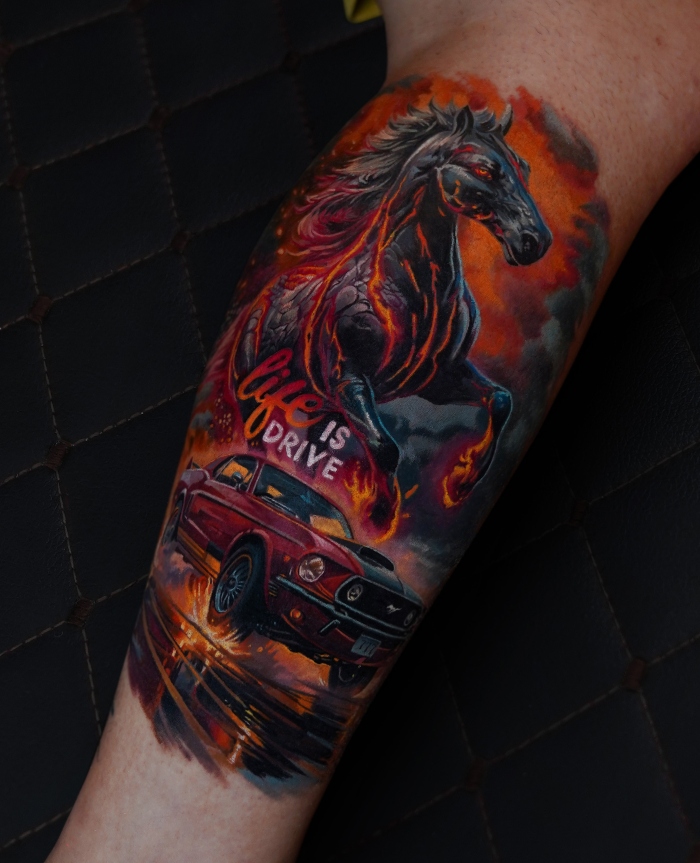

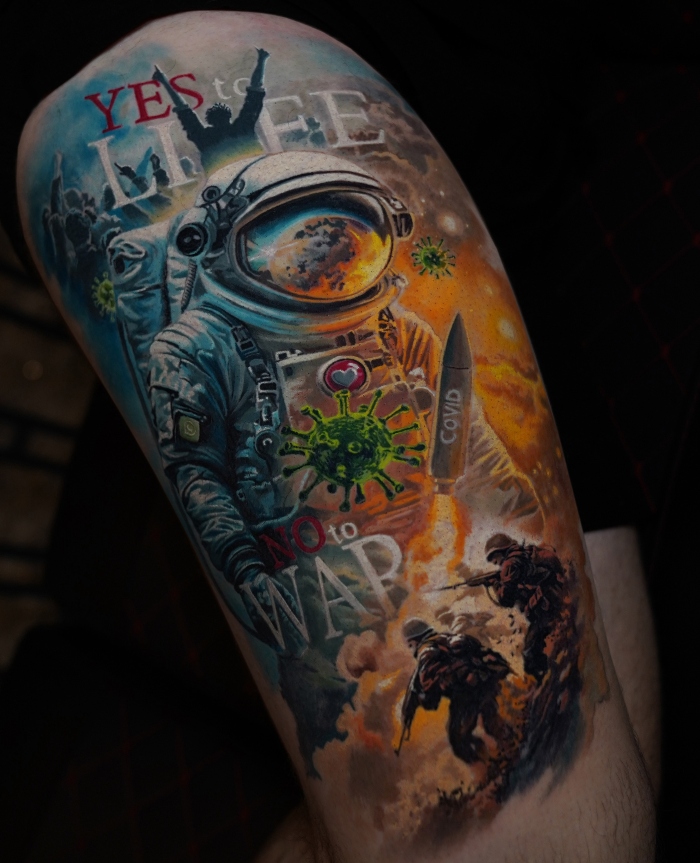

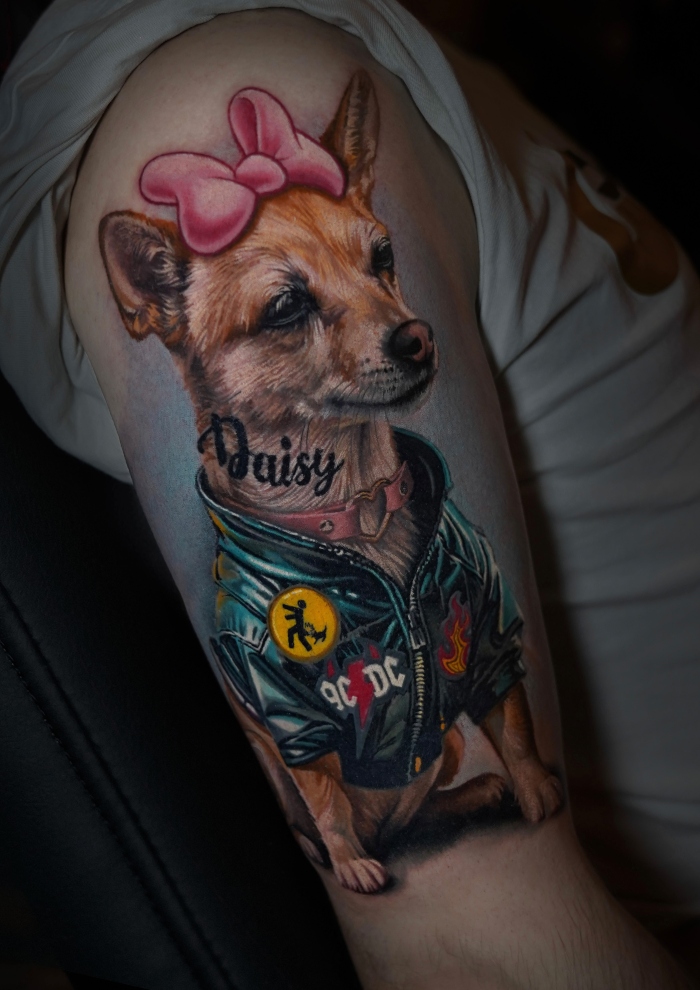

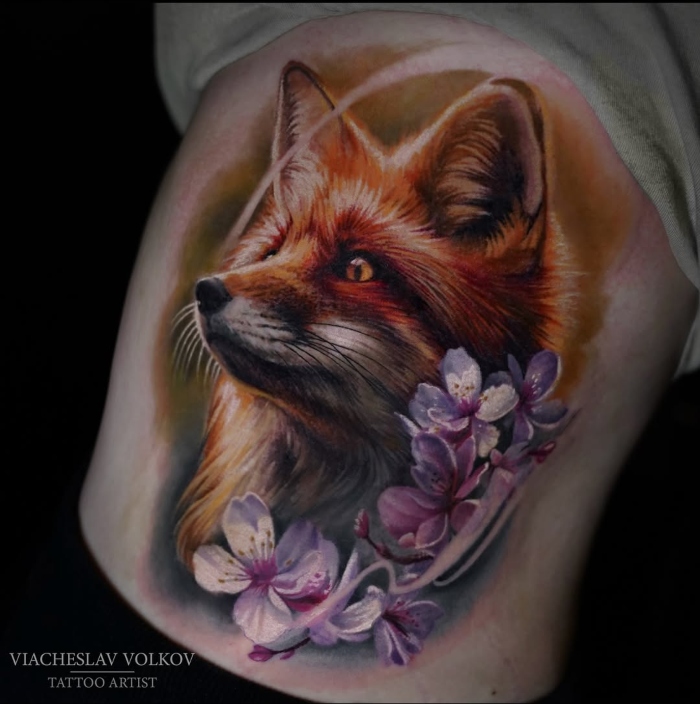






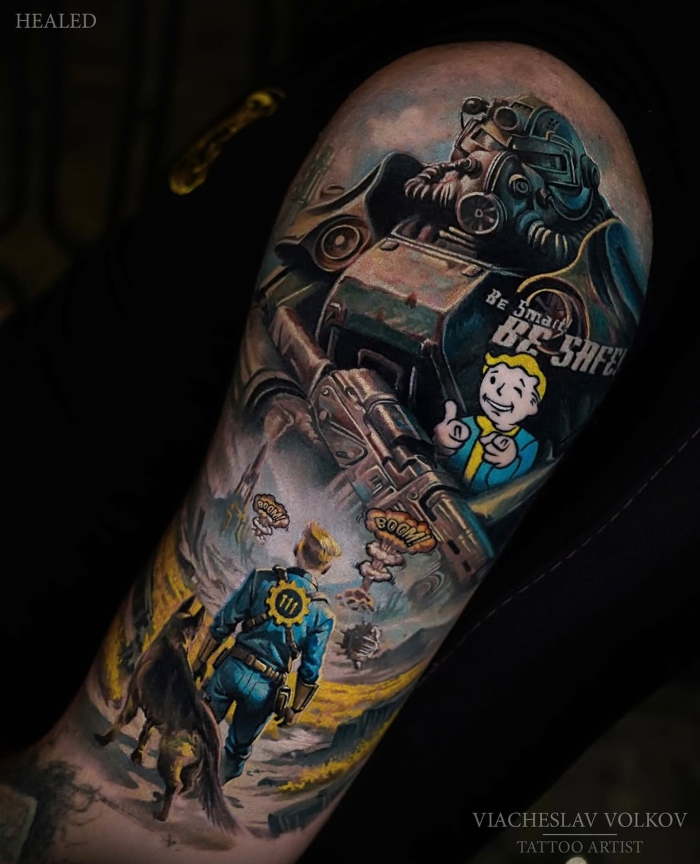


Leave A Comment